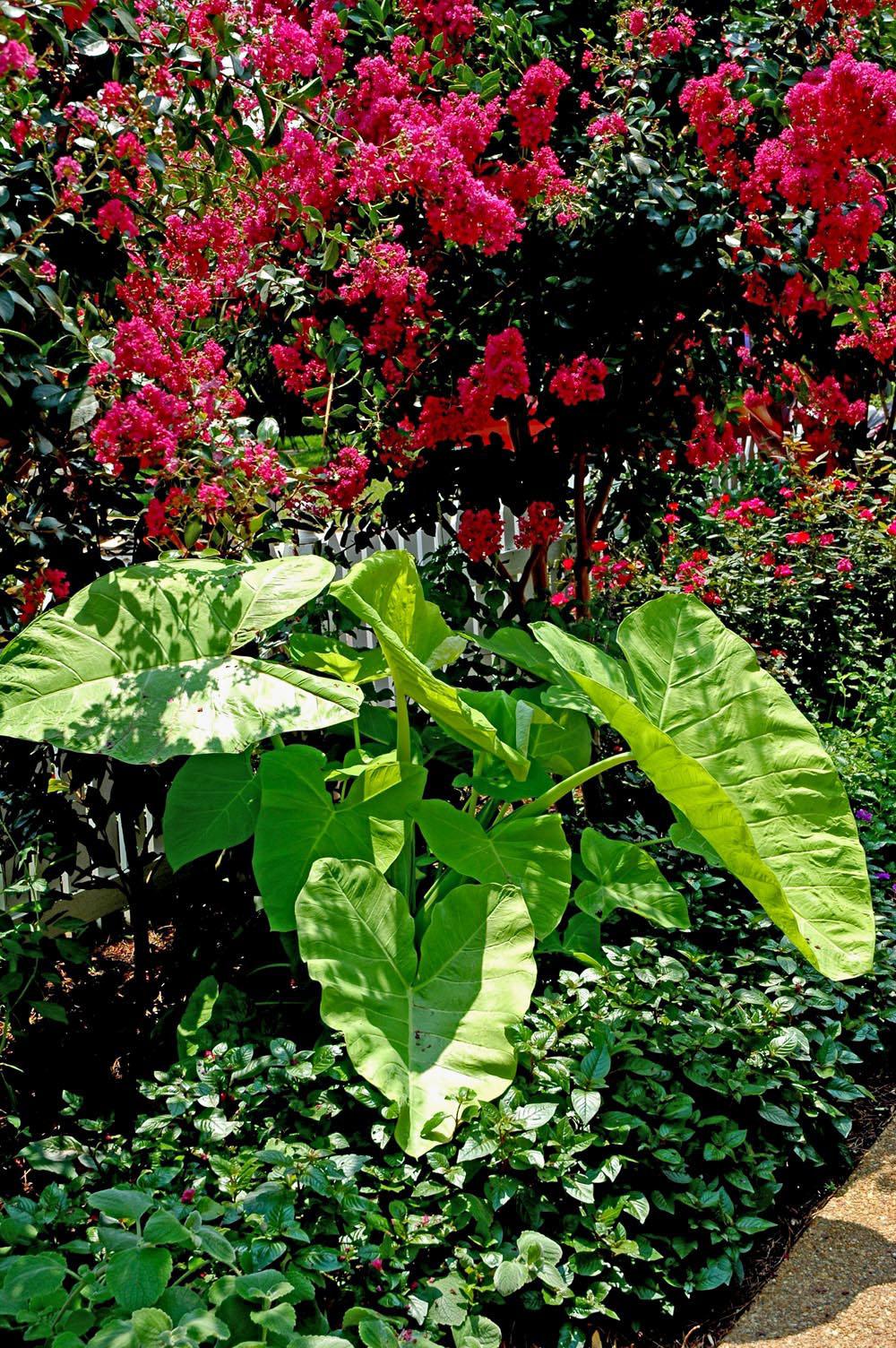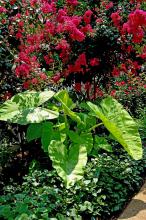Information Possibly Outdated
The information presented on this page was originally released on July 20, 2006. It may not be outdated, but please search our site for more current information. If you plan to quote or reference this information in a publication, please check with the Extension specialist or author before proceeding.
Lime Zinger gives a taste of the Tropics
By Norman Winter
MSU Horticulturist
Central Mississippi Research & Extension Center
This plant is a real zinger -- Lime Zinger to be exact. All of you who passed it up at this year's garden and patio shows would kick yourselves if you could see those owned by Barbara Harvey in Kosciusko. The Southern Gardening TV crew filmed her wonderful landscape as part of our 10th anniversary celebration.
We had filmed the Lime Zingers in March at a garden center when they were in 6-inch containers, but we failed to have the vision that Barbara had for her cottage garden.
Lime Zinger is a different elephant ear than the ones most Mississippi gardeners are growing. The giant-leafed plants, which look most like an elephant's ear because they droop slightly, are known as Colocasia esculenta. This is the same genus and species as the Black Magic that has skyrocketed in popularity.
The other really popular elephant ear is the Giant Taro. This plant holds the leaf erect and, depending on where you stand, usually gives a glimpse of both sides. This plant is known as Alocasia macrorrhiza. All of these plants can reach enormous sizes.
The Lime Zinger is certainly no slouch in the size category. It is known botanically as Xanthosoma mafaffa and is also called Giant Golden Taro and The Big Mafaffa. What makes this elephant ear so amazing is that the leaves are monolithic in size and lime green. Lime continues to be a very hot color in the garden.
The Xanthosoma genus is known for extra-large plants. One lady in Brookhaven normally has her Xanthosoma sagittifolium reaching close to the top of the house by late summer. The Lime Zinger is expected to be in that 6- to 10-foot range as well.
Barbara Harvey has used her Lime Zinger to perfection, placing it underneath red Tonto crape myrtles. Under the Lime Zinger, she is growing a bed of Joseph's Coats.
Lime Zinger is expected to be perennial in zones 7b and warmer. Gardeners farther north are growing unbelievable plants by simply digging and storing their bulbs indoors for planting in the spring.
The Lime Zinger definitely likes a lot of sun to grow really large and color up. The main ingredient may very well be soil preparation. The soil should be fertile and well drained, especially for winter survival.
If your soil is tight and heavy like mine, incorporate 3 to 4 inches of organic matter for good aeration and drainage. Or try planting on raised beds like the commercial landscapers do.
While preparing your bed, work in a slow-release, pre-plant fertilizer like a 12-6-6 with minor nutrients. Use about 2 pounds per 100 square feet of bed space.
Most garden centers will sell Lime Zinger as container-grown plants. Plant them at the same depth they are growing in the container. If you are buying through mail order, you will probably get a bare-root plant.
Feed your elephant ears monthly with light applications of fertilizer, and keep them well mulched. If you have an established clump, start feeding with the emergence of new growth in the spring. These are really low-maintenance plants: just remove tattered or unattractive leaves to keep them looking their best.
Use the Lime Zinger with bananas and colorful-leafed cannas for a really tropical look. When you walk out in your garden, you just may want to have a Hawaiian shirt on because you'll feel like you are in the islands.








